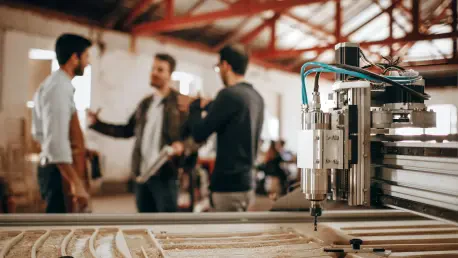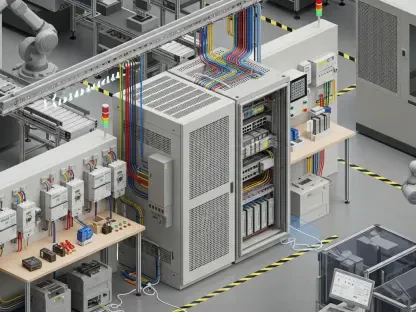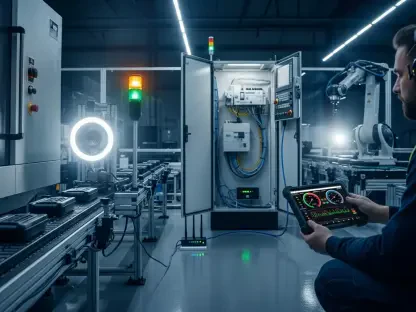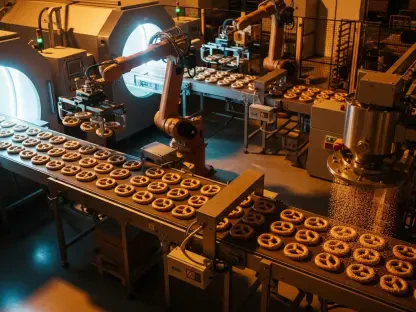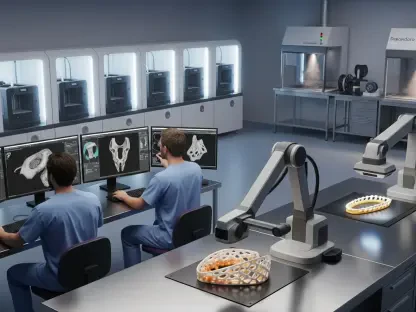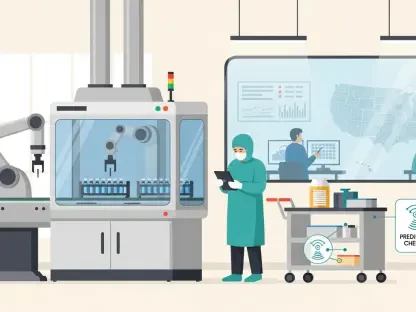Lightweight manufacturing stands at the forefront of innovation, propelling industries into a realm where material strength no longer compromises weight efficiency. The intersection of this leading-edge manufacturing philosophy with CNC (Computer Numerical Control) machining has catalyzed significant advancements. In global sectors such as aerospace, automotive, and defense, where lightweight materials like carbon fiber and titanium are indispensable, CNC machining has emerged as a pivotal force. Its ability to shape complex structures with precision and consistency meets the critical demand for performance-driven yet weight-conscious components. As industries strive for efficiency and sustainability, CNC machining becomes the linchpin for realizing these objectives.
High-Precision Applications in Lightweight Materials
Carbon Fiber: Precision and Challenges in Machining
Carbon fiber’s intriguing profile offers both numerous opportunities and a distinct set of challenges when introduced to CNC machining processes. Known for its high strength-to-weight ratio, this composite material poses a challenge only matched by its potential. Due to its anisotropic nature, where properties vary depending on the direction of the fibers, machining carbon fiber requires unparalleled precision. Conventional machining inadequacies, such as delamination and splintering, demand innovative approaches to ensure structural integrity and dimensional accuracy.
To mitigate these issues, CNC machining employs specialized tools, including diamond-coated and ceramic cutters, which enhance material finish and minimize structural damage. More than just tool selection, cutting strategies are pivotal; low cutting speeds paired with high feed rates are essential to reduce fiber separation risks. With such advancements, processes like complex geometry crafting have seen significant developments. For example, in aerospace applications where components like wing skins demand tolerances as precise as ±0.01mm, CNC machining’s capabilities become indispensable. This level of accuracy is achieved by integrating advanced software systems. Computer-Aided Manufacturing (CAM) systems play a crucial role in optimizing tool paths, reducing material stress, and ensuring the production of carbon fiber parts without compromising quality.
Titanium: Mastering Tough-to-Machine Materials
Titanium presents a unique landscape for CNC machining due to its inherent toughness and low thermal conductivity, which make it prone to rapid tool wear and heat generation. Despite these challenges, its exceptional strength-to-weight ratio renders it ideal for critical applications such as aerospace components and medical devices. The ability of CNC machining to address these challenges is a testament to its transformative impact on manufacturing processes. One of the primary strategies employed is the use of high-pressure coolant systems, which effectively manage temperature and extend tool life. By maintaining optimal thermal conditions, these systems reduce operational costs and ensure machining precision.
Furthermore, the integration of artificial intelligence (AI) in CNC machining processes has become instrumental. By predicting tool wear and optimizing cutting paths, AI technologies enhance the precision of machining titanium. Through real-time monitoring and adaptive adjustments, AI ensures production consistency, essential for applications demanding exacting standards, such as jet engine blades and surgical implants. Hard carbide tools, often coated with temperature-resistant alloys, bolster resilience against titanium’s machining hurdles, allowing for tolerances as tight as ±0.005mm. Such advances are pivotal in delivering components that not only meet performance expectations but also align with the evolving sustainability mandates of modern manufacturing.
Advanced CNC Machining Techniques
The Integration of 5-Axis Machining for Complexity and Precision
The evolution of CNC machining has prominently featured the adoption of 5-axis machining systems, providing unparalleled flexibility and precision. This technology allows for the simultaneous movement of both the tool and the workpiece along five different axes, drastically enhancing the capability to produce complex geometries and intricate details. This approach is particularly beneficial in industries where the creation of sophisticated designs—such as aerospace structures and electric vehicle (EV) battery enclosures—is paramount. The ability to achieve high-precision results with minimal setups not only streamlines production processes but also significantly reduces the potential for error.
The burgeoning demand for such advanced systems reflects a broader industry trend toward multi-axis CNC machining capabilities. The global CNC market continues to expand, fueled by a need for high-precision manufacturing technologies that cater to the growing emphasis on lightweight design. As these demands increase, so does the commitment of manufacturers to invest in cutting-edge CNC systems that can meet and exceed stringent industry requirements. This investment not only propels technological growth but also reinforces the indispensable role of CNC machining in shaping tomorrow’s industrial landscape.
AI and IoT Integration Enhancing Precision and Efficiency
The infusion of AI and the Internet of Things (IoT) into CNC machining processes heralds a significant leap forward in production precision and efficiency. AI algorithms enhance the machining process by analyzing data in real-time, allowing for immediate adaptations to prevent common defects such as delamination in carbon fibers or overheating in titanium. This real-time analysis not only improves reliability but also streamlines the production process by minimizing downtime and defects.
IoT-enabled sensors further augment CNC machining by providing detailed insights into machine performance and maintenance needs. These sensors facilitate a proactive approach to maintenance, predicting potential failures before they occur, thereby enhancing overall operational efficiency. The synergetic combination of AI and IoT aligns with sustainability goals as well. By reducing material waste and optimizing resource usage, these technologies contribute to a more eco-friendly production approach. As industries continue to integrate AI and IoT into CNC systems, the potential for more efficient, sustainable, and precise manufacturing will only increase, positioning CNC machining as a cornerstone for modern industrial practices.
Innovations in Hybrid Manufacturing
Blending Additive and Subtractive Processes
The emergence of hybrid manufacturing, which combines additive and subtractive processes, marks a revolutionary shift in CNC machining. This approach capitalizes on the strengths of both 3D printing and CNC technologies to deliver superior manufacturing outcomes. By using 3D printing for near-net-shape parts and CNC machining for precision finishing, manufacturers achieve a harmonious balance that cuts waste and dramatically reduces production costs. The hybrid model proves especially beneficial in crafting intricate and lightweight frameworks, vital in industries such as aerospace, automotive, and electronics.
Such a blend not only shortens the production timeline but also offers unparalleled flexibility in design and execution. Companies leading the charge, such as those within the automotive sector, leverage this technique to craft essential components like chassis and battery enclosures, demonstrating refined production efficiency. The ability to incorporate these hybrid methods into manufacturing lines translates into concrete benefits such as a significant reduction in material waste—often exceeding 25%. This dual-process methodology not only meets high-performance demands but aligns well with global sustainability objectives, aiding industries in their quest for reduced operational footprints.
Real-World Implementations and Advancements
The practical application of hybrid manufacturing techniques is becoming increasingly prominent as businesses strive for competitive advantages and cost savings. Organizations at the forefront of innovation are utilizing 3D printing to create initial part forms and employing CNC machining to achieve exacting standards and finishes that are critical for functionality. This synergistic approach has proven advantageous in sectors that demand both complexity and precision without compromising on performance or durability.
With manufacturers continually seeking ways to enhance product quality while maintaining efficient production cycles, the real-world implications of hybrid manufacturing are vast. By enabling a more responsive and adaptable production methodology, these combined techniques allow businesses to iterate rapidly, refine designs, and decrease time-to-market. Moreover, as this trend continues to gain momentum, it will likely spur further advancements in both CNC and additive manufacturing technologies, ultimately redefining the parameters of what is possible within lightweight manufacturing.
Outlook and Implications of CNC Machining in Lightweight Manufacturing
Trends and Emerging Consensus
CNC machining has firmly entrenched itself as an essential component in the evolution of lightweight manufacturing. Its precision and efficiency are increasingly recognized as critical factors for industries that prioritize high-performance and reduced weight. A notable trend within the sector is the growing integration of advanced technologies such as AI and multi-axis systems, which enhance machining capabilities and fuel the industry’s progression toward more sustainable practices. As CNC machining evolves, the industry consensus underscores its indispensable role in overcoming machining challenges posed by complex materials such as carbon fiber and titanium.
This technological convergence has garnered significant attention, with an increasing number of stakeholders acknowledging the importance of continuous innovation in CNC processes. The focus remains on embracing tools and methodologies that harmonize precision with environmental consciousness, essential for maintaining a competitive edge in today’s fast-paced manufacturing environment. As industry leaders and experts align on the importance of CNC machining, it is clear that the technology will remain central to the ambitions of manufacturers worldwide.
Future Prospects and Strategic Considerations
Lightweight manufacturing is a key driver of innovation today, pushing industries into an era where strength no longer has to be sacrificed for weight efficiency. This modern approach to manufacturing, particularly when combined with CNC (Computer Numerical Control) machining, has sparked remarkable progress. Industries such as aerospace, automotive, and defense rely heavily on lightweight materials like carbon fiber and titanium. Here, CNC machining stands out as a critical player. It excels in crafting intricate designs with both precision and consistency, which is essential for creating performance-oriented yet weight-sensitive components.
As industries aim for greater efficiency and sustainability, CNC machining plays an integral role in achieving these goals. The technology supports manufacturers in reducing material waste and energy consumption, in turn contributing to a more sustainable production process. It also offers the flexibility to innovate design and production methods, allowing for continuous improvement in the way we manufacture lightweight components. In essence, CNC machining not only meets current industry demands but also sets the stage for future advancements, driving industries toward a more efficient and sustainable future.
